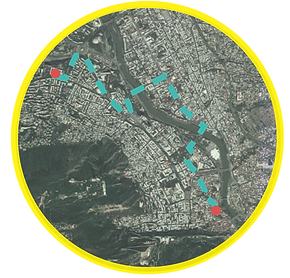


Urban Walking Tour
The chaotic urban structure of Tbilisi can be perceived as its identity. Chaos is the reason of its attractiveness, but at the same time, the hinder for its development.
For various political, economical , social reasons, structurally distinct urban units were formed through history.
The Urban Walking Tour includes some of the most important urban areas that depicts the architectural development of Tbilisi through time.
This area perfectly depicts present urban issues associated with the modern build-up integration and its inconsistency with the existing urban fabric. The chaotic, unsystematic urban growth created issues related to the disappearance of green covers, lack of infrastructure and other problems that resulted in an unhealthy
urban environment.

One of the main avenues in the historical part of Tbilisi, known for its 19th century classical architecture. Much of the area was built by the German contractor Friederich Vezel in the 1880s. Named after David IV of Georgia, it is located in a historical district of Tbilisi close to the left embankment of the Mtkvari River and recently underwent extensive restoration.
Kala – is the name of the oldest part of the city surrounded by the old fortification wall of Tbilisi. The vernacular architecture combines age-old Georgian building practices with a range of foreign influences, reflecting centuries of diverse cultural influences.

Bonus stop - Tbilisi Flea Market

Meeting point - TSU building #1 17:00
Ending - Kala District 19:20
Walking Distance 4.5 km